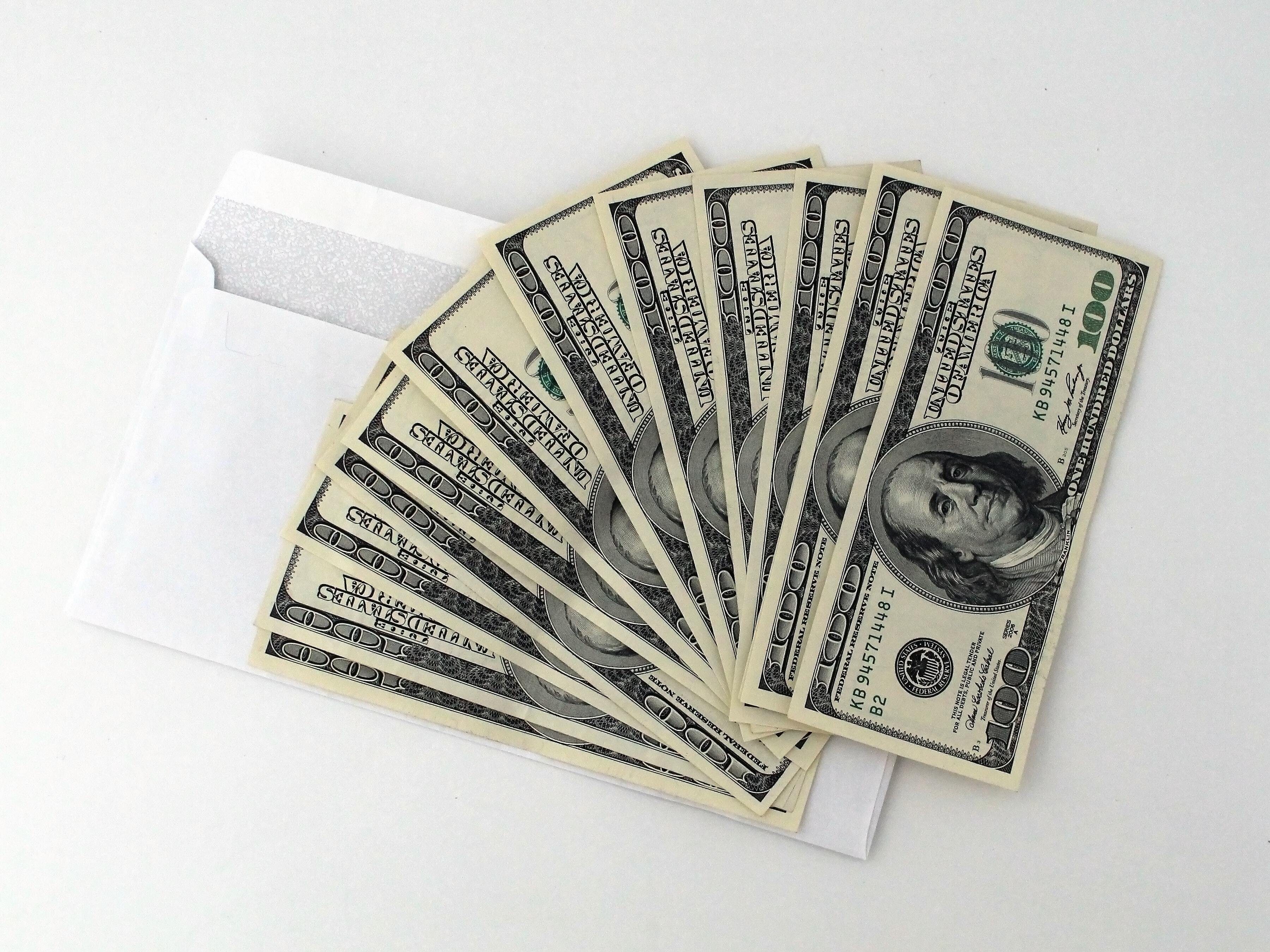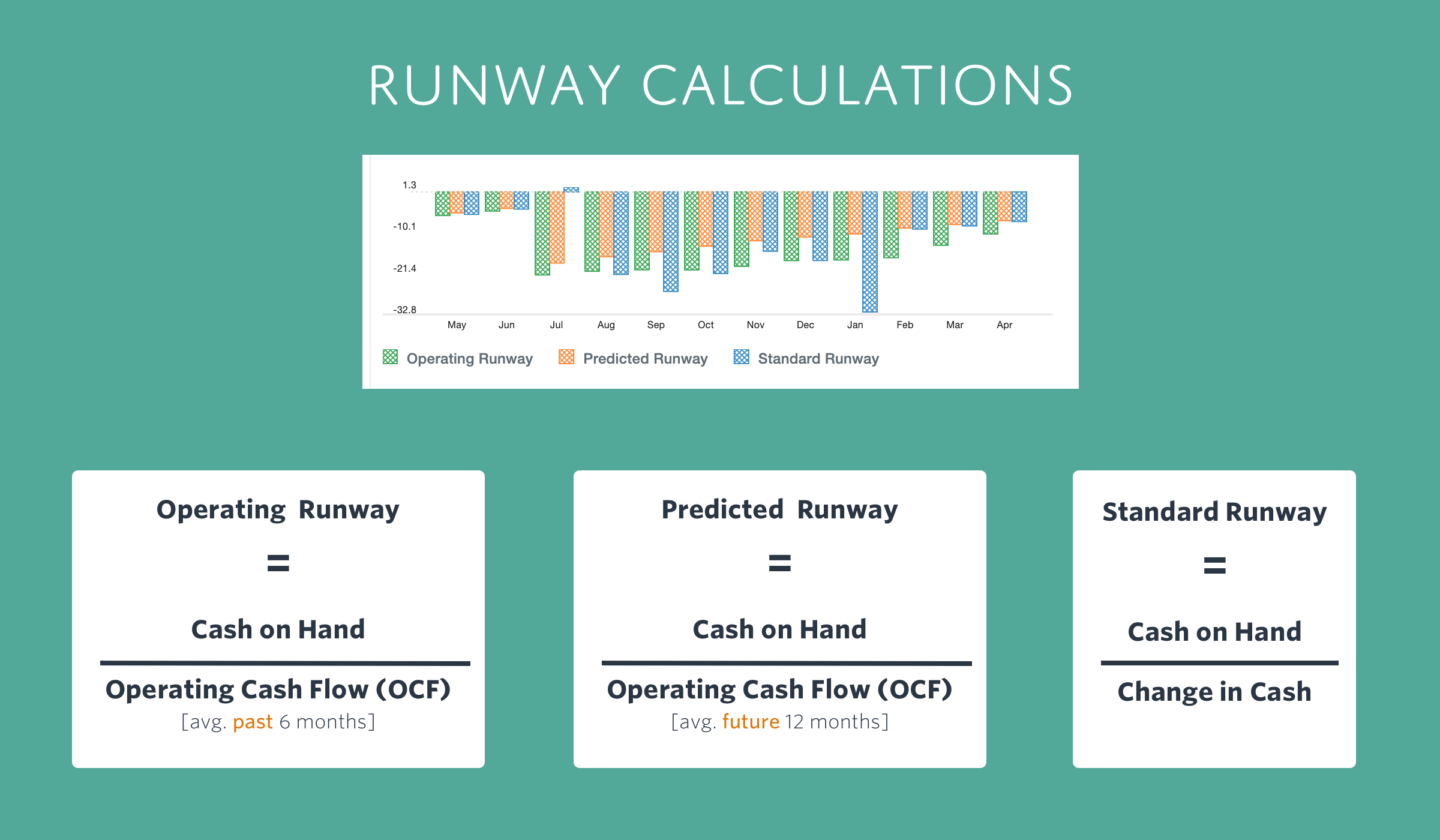As a finance professional, you know what a runway is and understand its importance. And if you’re running a startup or recently created a business, it’s one of a few critical KPIs that’s always on your mind. As an indicator of how much time the business will stay liquid and able to meet its obligations, the metric can also be used to help make critical investment or hiring decisions.
Cash flow runway is an especially informative metric for startups and other businesses currently operating at a loss. These losses are the result of the business intentionally investing more back into the business than the current margins allow.
Many startups like Uber and Airbnb are well-known adopters of this strategy, implemented with the goal of becoming profitable when the business hits a certain critical customer base.
The idea, of course, is that profitability is achieved (or additional outside investment secured) before the cash runs out. As such, keeping track of your cash flow runway is a matter of life and death for your business.
Extending the runway can create extra breathing room to allow you to focus on long-term success instead of keeping the lights on in the short term.
Your cash flow runway lets you know how much time the business can survive and is composed of two key factors: your cash on hand and your burn rate. Beyond closely tracking your burn rate and your remaining runway, using financial modeling software and ensuring your calculations are data-driven can help you make the right decisions for the business.
Calculate your burn rate
Determining your burn rate is a fairly simple calculation. If it’s not an already built-in metric, your financial modeling software should readily provide you with the necessary inputs for the calculation.
Burn rate measures your negative cash flow, indicating the amount of net cash the business is consuming each month.
Because it’s a measure of negative cash flow, burn rate is an informative metric only as long as the business isn’t profitable. While there are multiple ways to calculate it, including or excluding certain factors like revenue and outside investment, the most informative methodology is the net burn rate.
The net burn rate calculation also considers revenue coming in—and not simply in the form of sales but actually when you have cash in hand. Because generating additional sales can extend your runway, or even make the metric irrelevant, the net burn rate is the most informative.
Depending on your business model and the current business targets, burn rate with and without investor funding can both be valuable metrics. Excluding investor funding allows you to see the burn rate from operations; leaving it in gives you the true cash position.
When calculating burn rate, it’s also critical to consider upcoming changes. In other words, instead of simply using the average cash-out of the past six months, use your financial modeling software to look at your future burn rate based on forecasted expenses.
Future factors and events like major capital investments or marketing campaigns, new products, and new hires can have a major impact on how much cash you’re going to burn through.
Current cash on hand
The current cash position of the business gives the starting point for your cash flow runway calculation. Your financial modeling software will use the current cash position as the numerator in the formula. Dividing this figure by the monthly burn rate gives the remaining number of months of runway.
Three runway KPIs
There are three main runway KPIs that you should track using your financial modeling software:
- Operating Runway (Cash on Hand / Operating Cash Flow from the past 6 months)
- Predicted Runway (Cash on Hand / Forecasted Operating Cash Flow)
- Standard Runway (Cash on Hand / Change in Cash)
Although all are similar and offer valuable insights, there are a few important nuances to consider when choosing which one you focus on. Let’s take a closer look.
Operating runway
This metric shows the remaining number of months a business can operate based on average burn rates from the recent past and current cash on hand. The downside, however, is that it ignores any planned changes affecting burn rates or cash on hand.
For example, if you’re releasing a new product or entering a new market you might be forecasting additional cash inflow from revenues. On the other hand, if you’re adding staff or planning a major investment, your burn rate (and in turn your operating runway) won’t reflect those changes.
Predicted runway
Essentially the same calculation as operating runway except that instead of looking at the previous six months, predicted runway also considers forecasted future cash flows. Generally, this metric is more accurate, as it accounts for planned changes in the business.
However, when using forecasted cash flows it’s crucial to be realistic about your expectations, and to engage in some scenario or contingency planning.
Standard runway
As the default runway calculation in Jirav’s financial forecasting software, the standard runway is simply a measure of the current total cash divided by the previous period’s change in cash. It’s a rather broad calculation which may not always be accurate, especially for companies with recent one-off transactions (like major capital investments or investor financing).
Make runway forecasts better with Jirav
Choosing the wrong methodology or making bad assumptions can create major issues for your business and its stakeholders. Miscalculating and running out of cash sooner than expected can be fatal for any business, especially one that isn’t currently cash flow positive.
Rather than considering it as a sort of doomsday clock, runway is best seen as a helpful metric, assisting you in making critical decisions. Should you hire that highly sought-after developer? Or is an additional sales and marketing expert more important? What’s most important right now, improving the product or generating more revenue? At current rates, how long can you continue to pay everyone’s salaries?
Linking your runway KPIs with Jirav can help you better consider how these complex factors can affect your burn rate forecast. Real-time updates of all three runway metrics, constantly updated based on current information from your financial forecasting software can give your management team valuable insight.
Project your burn rate up to 12 months into the future and see how upcoming developments will affect your runway. If sales are starting to pick up or you’re hitting record adoption rates your burn rate could change significantly. Linking your runway with your forecast gives you a consistently updated runway projection, allowing for quick reactions from the business’s decision-makers.
Jirav’s financial modeling software also allows you the flexibility to quickly run many different scenarios and answer critical questions. For example: if this doesn’t work, what does that do to our runway?
Driver-based forecasting allows you to check various scenarios and define action plans for what to do if X happens, before you’re reacting in crisis mode.
The optimal solution
For a fledgling business, keeping track of your cash flow runway is a critical factor in keeping the business alive long enough to reach profitability. Anything you can do to extend the runway can give the business additional breathing room, allowing you to focus on long-term decisions and not simply keeping the lights on.
Jirav’s financial modeling software helps you visually track various runway metrics and other KPIs as part of your dashboards and regular reporting packages.












